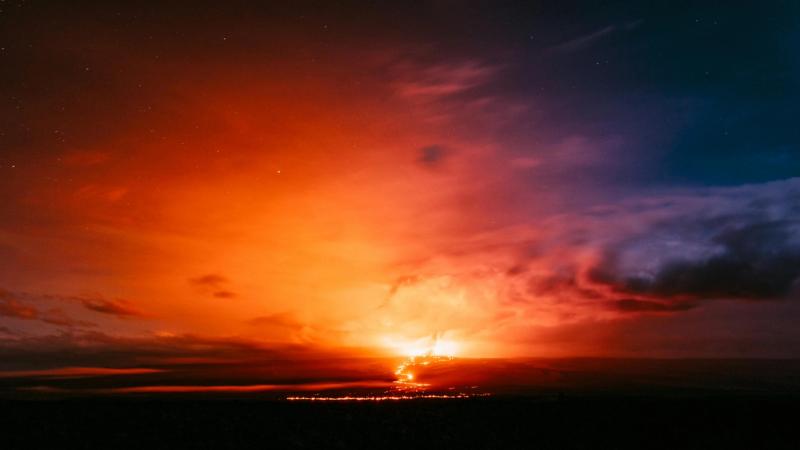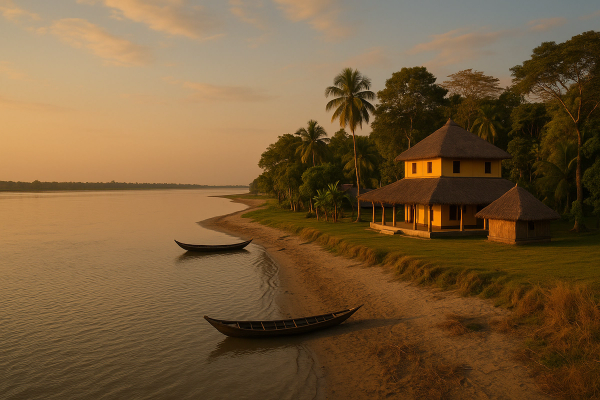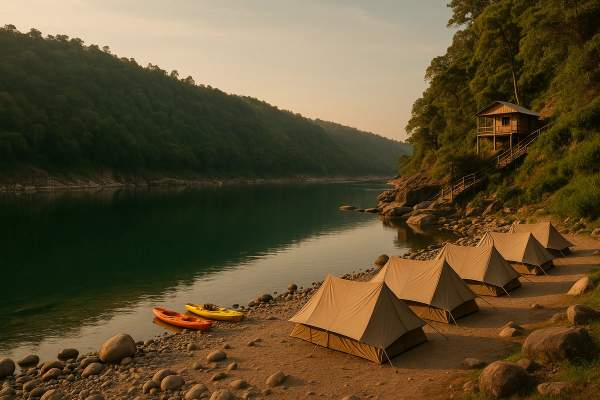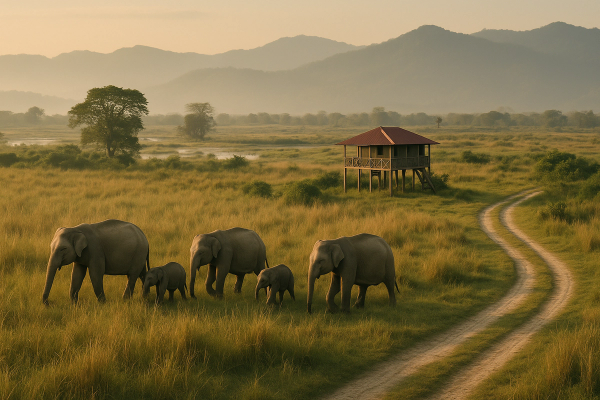
Kīlauea at Night: Seriously, You Gotta See Hawaii’s Volcano Glow Under the Stars#
Okay, so picture this: You're on the Big Island of Hawaii. The sun's dipped below the horizon, the air's got that cool island night vibe, and in the distance... there's this glow. Not like city lights, but something deep, primal, almost alive. That, my friends, is Kīlauea at night, and let me tell you, seeing that Hawaii volcano glow is an experience that sticks with you. It’s kinda humbling, honestly.¶
I’d heard about it, seen pictures, you know? But nothing really prepares you for seeing the Halemaʻumaʻu crater simmering under a sky packed with stars. It’s easily one of the coolest things I did on my Big Island night adventure. So, if you're heading that way, lemme share what it was like and some tips so you can check it out too.¶
What's the Big Deal with Kīlauea Anyway?#
Right, quick context. Kīlauea isn't just any volcano. It's one of the world's most active volcanoes, located within Hawaiʻi Volcanoes National Park. And for Native Hawaiians, it's deeply sacred ground – the home of Pele, the goddess of fire and volcanoes. So, visiting comes with a responsibility to be respectful, yeah?¶
The main action (when it's happening, 'cause volcanoes do their own thing) is often centered around the Halemaʻumaʻu crater at the summit caldera. During eruptions, this crater can fill with a lava lake, and while you usually can't walk right up to flowing lava these days (safety first!), you can often see the incredible glow reflecting off the gas plume, especially after dark. It’s pretty epic.¶
When Should You Go See the Glow?#
Honestly? The best time to see the Kīlauea volcano glow is whenever there's actually an eruption happening that's visible from the viewing areas. Volcanoes are unpredictable, lol. So, step one is always checking the official Hawaiʻi Volcanoes National Park website (https://www.nps.gov/havo/planyourvisit/lava2.htm) for current eruption status and viewing conditions. Seriously, check it right before you go.¶
Assuming Pele is putting on a show:¶
- Nighttime is Key: The glow is WAY more dramatic after sunset. Duh, right? But aim to arrive before sunset to snag a good parking spot and watch the transition. Twilight is pretty magical too.
- Weather Matters: Big Island weather can be weird. One minute it's clear, the next it's socked in with fog or rain ('vog' – volcanic fog – is also a thing). Clear nights are obviously best for both the glow and stargazing. Check the weather forecast specifically for the park summit (it's higher elevation, so different from Kona or Hilo).
- Crowds: Yeah, it gets busy, especially during peak eruption viewing times. Weeknights might be slightly less crowded than weekends. Patience is your friend here.
My trip was in October, and honestly, the weather was a bit hit-or-miss. One night was super clear, the next was kinda foggy. Just gotta roll with it. But even with some fog, the glow was intense!
Getting There & Getting Around the Park at Night#
You'll need a car. Hawaiʻi Volcanoes National Park is massive, and public transport options are basically non-existent for getting there or around inside, especially at night. You'll likely be flying into either Kona (KOA) on the west side or Hilo (ITO) on the east. Hilo is much closer (like 45 mins drive), while Kona is about 2-2.5 hours away.¶
The park entrance fee is usually per vehicle (around $30 last I checked) and is good for 7 days. They have automated gates now too, so paying is easy even if the booth isn't staffed late.¶
Navigating Inside the Park After Dark#
- Main Viewpoints: For the Halemaʻumaʻu crater glow, the popular spots are viewpoints along Crater Rim Drive, like Kūpinaʻi Pali (Waldron Ledge), Kīlauea Overlook, and Uēkahuna. Uēkahuna is often the spot, but it gets PACKED.
- Parking: It can be a nightmare. Arrive early (before sunset) or be prepared to circle around or walk a bit from overflow areas. Follow the rangers' directions – they know what they're doing.
- Walking: Trails connect some viewpoints. Bring a flashlight or headlamp (preferably with a red light setting to preserve night vision). Stick to marked paths ONLY. It's dark, the terrain is uneven, and there are hidden dangers off-trail (like earth cracks and steep drops). Seriously.
Pro Tip: Download offline maps (like Google Maps offline for the area) before you go. Cell service can be spotty inside the park, especially away from the main visitor center areas.
Where to Stay for Your Night Volcano Tour#
You've got options, depending on your budget and how close you wanna be.¶
- Inside the Park: Volcano House Hotel (https://hawaiivolcanohouse.com/) is literally right there, overlooking the crater. Pricey, books up fast, but location is unbeatable for rolling out of bed to see the glow. There's also Nāmakanipaio Campground if you're into camping.
- Volcano Village: Just outside the park entrance. Lots of charming B&Bs, vacation rentals, and small inns. Feels very rainforest-y and quiet. This is where I stayed – found a cute little cabin. It's super convenient for early morning or late-night park visits.
- Hilo: About a 45-minute drive. More hotel options, restaurants, and generally lower prices than Volcano Village. Good base if you plan to explore the east side too.
- Kona/West Side: Possible, but it's a long drive back after a late night of volcano viewing (2+ hours). I wouldn't really recommend it just for the night glow experience unless you're already staying there for other reasons.
Staying in Volcano Village was perfect for me. Could easily pop into the park after dinner, see the glow, and be back tucked in bed without a super long drive. Plus, the misty rainforest vibe there is cool.
Witnessing the Kīlauea Glow: What It's Really Like#
Okay, the main event! You've parked, you've walked to a viewpoint (probably bundled up 'cause it gets chilly at elevation, even in Hawaii!)... what next?¶
Finding Your Spot & Settling In#
Find a spot along the railing or a slightly elevated position if you can. Be patient – people come and go. The best views are often from places like Uēkahuna or Kīlauea Overlook, looking across towards Halemaʻumaʻu.¶
As dusk deepens, you'll start to see it. First, maybe just a faint orange tinge in the steam plume rising from the crater. Then, as the sky goes fully dark, it intensifies into this pulsating, deep red-orange Hawaii volcano glow. It's mesmerizing. Sometimes you can even see spatters of lava briefly illuminating the crater rim if the activity is high enough – check the official reports for what's currently visible.¶
It's surprisingly quiet, apart from the other people murmuring. You might hear volcanic gases hissing or rumbling faintly if conditions are right, but mostly it's just this silent, powerful light show. And the STARS! If it's a clear night, the Milky Way above the volcanic glow... just wow.
Tips for the Best Kīlauea at Night Experience#
- Bring Layers: It gets surprisingly cold and windy at the summit (4,000 ft elevation). Think jacket, long pants, maybe even a beanie. Seriously.
- Flashlight/Headlamp: Essential for walking safely. Red light mode is best for preserving everyone's night vision.
- Camera Gear: Tripod is crucial for night shots. Know your camera settings for low light beforehand. Don't expect amazing pics with just a phone, but you can still capture the mood.
- Binoculars: Great for getting a closer look at the crater activity.
- Snacks & Water: Facilities are limited at night. Bring your own.
- Patience & Respect: It's crowded. Be cool. Keep your voice down. Don't use bright white lights. Remember it's a sacred site.
- Check Conditions *Again*: Seriously, the park website is your best friend. Activity can change, viewing areas can close. Be informed.
What About Night Volcano Tours?#
There are definitely companies offering night volcano tours. Are they worth it? Depends. They handle the driving, parking stress, and often provide knowledgeable guides, park entry, maybe dinner, and sometimes gear like jackets and binoculars. If you don't want to deal with the logistics, especially the drive back late at night, it can be a good option.¶
Downside? Less flexibility, you're on their schedule, and it costs more than just driving yourself. I opted to drive myself for the freedom, but I saw plenty of tour groups, and they seemed well-organized.¶
Honestly, driving wasn't too bad, but finding parking was stressful. If I went again during a super peak time, I might consider a tour just to skip that part.
Being a Good Visitor: Respect Pele's Home#
This is super important. Kīlauea is a place of immense cultural significance.¶
- Stay on Marked Trails: Protects the fragile environment AND keeps you safe from unseen hazards.
- Don't Take Rocks or Lava: It's disrespectful (and supposedly brings bad luck – Pele's curse!). Leave everything as you found it.
- Be Respectful at Sacred Sites: Some areas might have cultural significance. Observe quietly.
- Heed Closures and Warnings: They exist for your safety and to protect resources.
- Pack It In, Pack It Out: Leave no trace. Take all your trash with you.
So, Final Thoughts on Kīlauea at Night?#
It's one of those 'bucket list' things that actually lives up to the hype. Seeing the raw power of the earth glowing like that, under that immense starry sky... it's humbling and awe-inspiring. It connects you to the planet in a way that's hard to describe. Like, you feel how alive Hawaii is.¶
Yes, it might be crowded, parking might be a pain, and the weather might not cooperate perfectly. But trust me, when you see that Halemaʻumaʻu crater pulsing with light against the darkness, none of that matters. It's pure magic.¶
If you're planning a Big Island night adventure, make seeing Kīlauea at night a priority. Just check the conditions, pack warm clothes, bring patience, and prepare to be amazed. You won't regret it.¶
Have you seen the Hawaii volcano glow? Got any tips I missed? Share 'em below! And if you're planning a trip, hope this helps! Check out more travel stuff over at imaginary blog link maybe? Idk, still figuring this blogging thing out lol.¶














